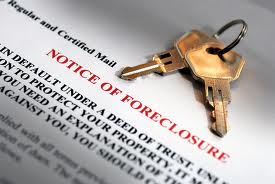
BLOG
Report: Default Rate on HAMP Mods High
Are you in trouble? Are you facing foreclosure? Call me, let's have a free consultation along with coffee! Laura Key 310.866.8422
The high re-default rate on mortgages modified through the government's Home Affordable Modification Program is mostly because of borrowers who received the smallest reduction in payments through the program, are still underwater on their loans, or have subprime credit scores, according to a new report by the Special Inspector General for the Troubled Asset Relief Program.
Of the nearly 1.2 million mortgages modified through HAMP in the last four years, 306,000 borrowers have re-defaulted on their loans, the report said. More than 88,000 more borrowers are at risk of re-defaulting, too.
The report also found that the longer a home owner stays in the HAMP modification program, the more likely they are to default. Borrowers who have been part of the program since 2009 have a re-defaulting rate of 46 percent.
HAMP helps borrowers by reducing the interest rate on at-risk mortgages, extending loan terms, or reducing mortgage principal.
"Treasury needs to research why so many borrowers are dropping out of the program," says Christy Romero, the head of SIGTARP.
Source: “Borrowers in Obama housing program re-defaulting, watchdog says,” CNNMoney (July 24, 2013)
Despite Improvement in Loan-Mod Defaults, Report Raises Alarms
Sadly, loan modifications have not been very successful. Have you had your modification denied? Call me - Laura Key 310.866.8422
There are few defenders of the Obama administration’s signature loan-modification initiative, the Home Affordable Modification Program, or HAMP. But a new report released on Wednesday raised an interesting criticism of HAMP—that borrowers aren’t staying current on modified payments even though HAMP has reduced, on average, borrowers’ monthly payments by more than $400.
The report, from the special inspector general for the Troubled Asset Relief Program, or Sigtarp, said there was an “alarming rate” of homeowners who were defaulting after receiving a permanent mortgage modification.
The report says data show that the longer a homeowner remains in HAMP, the more likely he or she is to redefault out of the program. This is true of almost any mortgage-modification program.
But the report raises broader questions about whether mortgage modifications have been worth the costs, and against what yard stick success in any such program should be measured.
There are plenty of faults to find with HAMP. Officials struggled to ensure taxpayer money wasn’t wasted, so they required lots of documentation. That created new headaches: banks rejected borrowers that they said provided incomplete forms, while borrowers routinely complained that banks lost their paperwork. In an interview last year, Shaun Donovan, the housing secretary, said it was a “fair criticism that programs initially were too complicated and had too many restrictions.”
Mortgage servicers were also overwhelmed. During tense meetings at the Treasury Department throughout 2009 and 2010, officials laid into the banks for not staffing up. Executives groused that HAMP rules changed so often that they couldn’t keep up and that new headline-grabbing initiatives were announced before they could be rolled out to be offered to borrowers.
Others said HAMP didn’t do enough to deal with negative equity, which prompted the administration to launch a belated effort two years ago to encourage principal reduction. The Treasury never made it mandatory because they feared it would both be too expensive and that it would lead banks to opt out of HAMP.
Under HAMP, banks received modest incentive payments to reduce borrowers’ monthly payments to around 31% of their current income, often by extending the loan term and dropping the interest rate. Modifications have resulted in an average monthly payment reduction of $545 or $400, depending on which type of modification lenders provide under the program.
So far, around 860,000 borrowers have active HAMP modifications, and around 290,000 have fallen out of the program. The Sigtarp report said it was “alarming” that 46% of a few thousand permanent modifications made in the third quarter of 2009 had redefaulted, as well as 39% of those made in the last quarter of 2009.
But some industry executives have said that, for all its faults, HAMP succeeded in giving the industry a template for a more sustainable loan modification. Before 2009, many modifications didn’t result in lower monthly payments, and mortgage modifications in the post-HAMP world have performed drastically better than those that came before. Around 25% of borrowers who received a modification in 2011 had fallen behind on payments within one year, down from 57% in 2008, according to banking regulators.
Moreover, more recent HAMP modifications are performing significantly better than earlier HAMP “mods,” something that may be owed to an improving economy as much as any program improvements. Around 11% of HAMP modifications made in late 2011 had defaulted after one year, compared with more than 20% for those made when the program launched in mid-2009.
Data also show that HAMP modifications, which typically offer the most generous payment relief, perform better than privately issued modifications.
Among the bigger questions raised by the report: If mortgage modification redefault rates under HAMP are too high, what’s an acceptable level? And can any mortgage modification program hit those targets?
Source: Wall Street Journal
White House Rolls Out 3 Foreclosure Prevention Efforts
Even though the market has become of hot bed in these last few months. There are still homeowners struggling to keep their homes. Here are some new programs that may help. Are YOU facing foreclosure? Call me! Laura Key 310.866.8422
The Obama administration announced the extension or debut of three programs aimed at helping distressed home owners avoid foreclosure. The three initiatives are:
Increasing outreach in the Making Home Affordable Program: The U.S. Department of Treasury is partnering with NeighborWorks America as well as the National Foreclosure Mitigation Counseling program to increase support for struggling home owners who seek assistance through the Making Home Affordable Program, which includes the Home Affordable Modification Program (HAMP). HAMP reduces monthly payments by more than $540 each month, on average. “Through the new initiative, housing counseling agencies will help struggling home owners successfully complete and submit application documents to their mortgage company free-of-charge,” according to the White House blog.
Informing the unemployed about programs: The Department of Labor will be encouraging American Job Centers to inform unemployed home owners about federal foreclosure prevention options that are available to them. For example, there is unemployment forbearance through HAMP that allows qualifying home owners who are unemployed to reduce or suspend their mortgage payments for up to 12 months.
HUD’s new Housing Counseling Office: The Department of Housing and Urban Development has launched a Housing Counseling Office, which offers at-risk home owners free or low cost information about foreclosure prevention and loan modification programs. It also offers general information on buying or renting a home, handling foreclosures, and how to avoid scams. The office is made up of a network of 2,500 HUD-approved housing counseling agencies.
“While we are encouraged that the housing market is on the path to recovery, our job is far from finished,” according to the White House blog. “There are still many struggling home owners who need assistance. By connecting eligible home owners with existing foreclosure prevention programs, our new counseling initiatives will enable more borrowers to remain in their homes and go a long way in ensuring a brighter economic future for these families.”
Source: The White House Blog
Foreclosures fall to lowest level since 2007
Foreclosure filings and repossessions fell to their lowest level since 2007 last year.
Total filings, including default notices and bank repossessions were down 33% for the year to 2.7 million, according to RealtyTrac, the online marketer of foreclosed properties.
One in every 69 homes had at least one foreclosure filing during the year, while 804,000 homes were repossessed. That's a significant improvement from the peaks reached in 2010 -- when 1.05 million homes were repossessed -- and the lowest levels seen since 2007.
More than 4 million homes have been lost to foreclosure over the past five years.
While the declines seem like good news for the housing market, where a flood of foreclosed homes has depressed home prices, much of it is due to processing delays caused by fall-out from the "robo-signing" scandal that broke in late 2010.
During the year, banks spent more time making sure paperwork was legal and proper, creating a backlog in the foreclosure pipeline. As a result, the average time it took to process a foreclosure climbed to 348 days during the fourth quarter, up from 305 days a year earlier.
"Foreclosures were in full delay mode in 2011, resulting in a dramatic drop in foreclosure activity for the year," said Brandon Moore, chief executive officer of RealtyTrac.
However, Moore said there were "strong signs" during the second half of the year that lenders are working through foreclosure backlogs in certain markets. He expects foreclosure activity to rise above 2011's level but remain below the peak hit in 2010.
Low rates offer some help for homeowners
Early in 2011, many forecasters were predicting a wave of foreclosures due to resetting adjustable-rate mortgages, but low mortgage rates helped many borrowers refinance into more affordable loans, said Moore.
The government helped as well, through efforts like the Home Affordable Refinance Program (HARP), which made refinancing easier for borrowers who owe more on their mortgage than their homes are worth.
Turning foreclosures into rentals
Government foreclosure prevention programs, including HARP and the Home Affordable Modification Program (HAMP), have started about 5.5 million mortgage modifications since April 2009, according to the U.S. Department of Housing and Urban Development.
"Programs like HAMP and HARP have definitely made a dent in the foreclosure problem," said Moore "However, they are certainly not living up to their billing of preventing several million foreclosures. In addition, many [HAMP] homeowners fall back into foreclosure later on."
Of course, there were still plenty of factors working against homeowners in 2011, including the continued erosion in home prices. Falling prices rob homeowners of home equity, which they can tap if they need emergency cash.
Foreclosure hot spots
Hot spots for foreclosures remain mostly in "bubble states," where speculative investors helped drive up home prices beyond their fundamental values during the mid-2000s housing boom.
Nevada, where one out of every 16 households received some kind of default notice during the year, was the worst hit of all, a distinction it has held for the fifth consecutive year.
Arizona had the second highest foreclosure rate and California came in third. Florida, which had been running neck-and-neck with the other "Sand States" in past years, fell to seventh, behind Georgia, Utah and Michigan.
Among metro areas, Las Vegas suffered from the highest foreclosure rate in 2011. California put seven cities in the top 10, led by Stockton in the second slot. Other cities in the top 10 included Phoenix, which finished sixth, and Reno, Nev. was eighth.
By Les Christie @CNNMoney January 12, 2012: 8:18 AM ET


